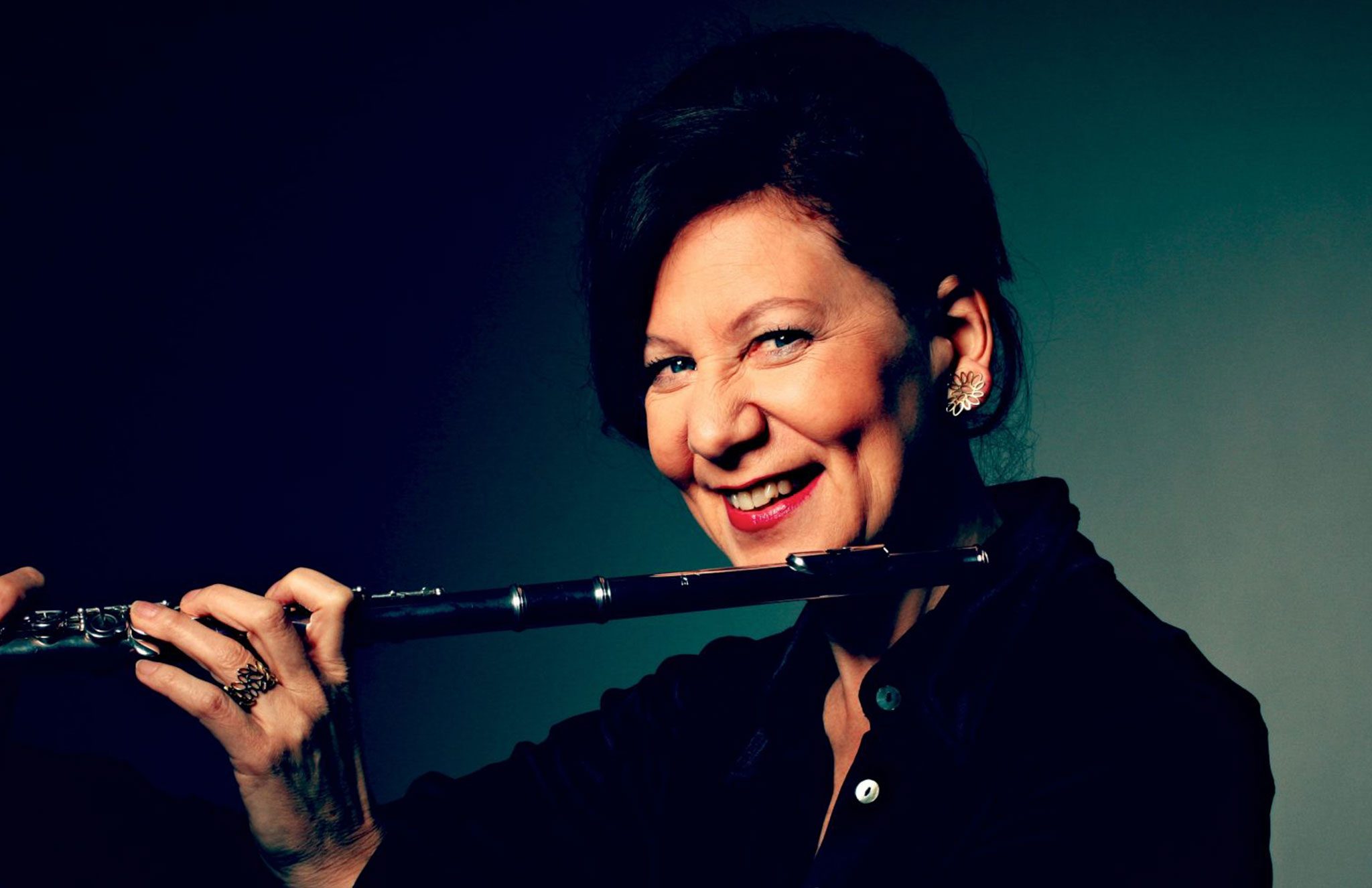CAMILLA HOITENGA, FLUTIST:
Concerto favorites:
- Ken-Ichiro Kobayashi – 4 Chapters* (1984)
- Kaija Saariaho — Aile du songe* (2001)
- Pèter Koeszeghy — Soulflight *(2006)
- Toshio Hosokawa — Per Sonare
- G. Ph. Telemann — Suite in a-minor
Current solo programs:
Fantasies and Friendships:
G.Ph.Telemann, Karlheinz Stockhausen, Kaija Saariaho, Pèter Koeszeghy, Douglas Boyd
Spirits and Memories:
Kaija Saariaho, Margaret Fairlie-Kennedy, Kazuo Fukushima, Kee Yong Chong, Helen Fisher, David Bohn, Noriko Nakamura
In Lucida Umbra Japan:
Noriko Nakamura, Takehito Shimazu, Juha T. Koskinen, Ken-Ichiro Kobayashi, Eetu Ranta-Aho
The beginnings…
I’ve always been eager to discover new flute music. I began flute lessons at age 8. By the time I was 11 or 12, while my father was buying the required Rubank method or “Melodious and Progressive Etudes” at the music store, I was curiously browsing the other flute pieces in the bin, asking to add one or two of these to my collection. This was always “just for fun”.I never dreamt that someday I would not only meet some of the composers of those pieces, but eventually many composers be writing pieces especially for me. And that in fact, the greater part of my musical path would be as a soloist.
I came to Europe in 1980 to play chamber music with musicians I had met the year before while attending rehearsals of Stockhausen’s first opera, “Donnerstag aus LICHT”. When our group broke up, I followed someone’s suggestion that I enter a contemporary music competition in Rotterdam (Gaudeamus Interpreters) as a soloist. I had had no ambition to be a soloist (there were fewer than a handful of possible role models then in the early 80’s!), but I gathered the repertoire I happened to have, including a freshly printed solo Stockhausen had sent me (In Freundschaft), added the required two pieces by Dutch composers, and off I went. And I won a prize! And I began to be regularly invited to play solo recitals with this repertoire.
I hadn’t ever worked on In Freundschaft with Stockhausen himself, but finally, before a concert I was booked to play in Cologne, I thought it would be a good idea to do so before I dare present it in his home town. Of course I had studied Suzee Stephen’s recording of the clarinet version and I had analysed every note and gesture in the whole 15-minute piece, so I felt sufficiently prepared to receive his feedback. But I was not prepared for the form his absolutely positive reaction took: he immediately began writing a flute version of a 25-minute-long group of clarinet pieces (Amour) for me.
I’ve always been curious to discover new flute music. While my father was buying the required Rubank method or “Melodious and Progressive Etudes” at the music store, I was eagerly browsing the other flute pieces in the bin, asking to add this or that other one to my collection. But this was always “just for fun”.I never dreamt that someday I would not only meet some of the composers of those pieces, but eventually not only would composers be writing pieces especially for me, but in fact the greater part of my musical path would be as a soloist.
Read More: History of the Flute Repertoire
My Instruments
I play a concert flute custom-made for me by Lillian Burkart, a piccolo by Anton Braun, an alto flute by Altus and bass flutes by both Altus and Kotato. But I also love the unique flute Jack Moore made for me in 1978, with the head joint Albert Cooper made for me in 1981. This was my instrument for almost 40 years.
(Just for the record, I also loved my student Bundy flute in grade school, then my Armstrong Heritage in high school, and finally my Haynes flute throughout college and early graduate school.)
Keep up-to-date on Camilla’s upcoming performances, subscribe to her newsletter here, and view her calendar here.
